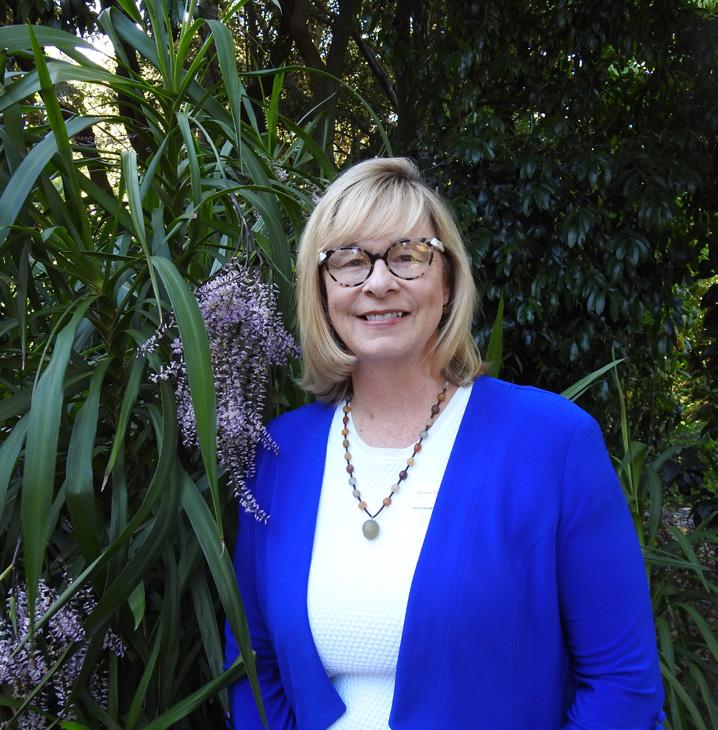~ PLANTS IN THE ~
GARDENS WE TAKE A LOOK AROUND THE BOTANIC GARDENS TO DISCOVER MORE ABOUT THE WONDERFUL PLANTS TO LOOK OUT FOR NEXT TIME YOU VISIT, AND EVEN SOME YOU CAN TAKE HOME TO YOUR OWN GARDEN
GARDEN
focus
WAX PLANT, WAX FLOWER Hoya species Family Asclepiadaceae This is a genus of around 70 species of mainly climbing or twining evergreen plants named for Thomas Hoy, an 18th century head gardener at Syon House on the Thames opposite Kew Gardens. Most are twining climbers with fleshy, smooth rather rigid leaves that are generally dark green with a waxy texture. There is a very wide range of leaf shapes and sizes. The flowers too are waxy or fleshy with spreading petals surmounted by a central crown that may be yellow, white, red, pink or purple. Best known and probably the most widely cultivated is Hoya carnosa (above) native to Southern China and India. It has small waxy white, starshaped flowers topped with a small pink crown, is night scented and quite vigorous once plants are well established. It does well trained on to lattice or other support but could also be used as a trailer. Australian species H. bella is a smaller grower with deep crimson, lightly-scented flowers which do well in a hanging basket. H. australis and H. macgillivrayi are two other 18 THE GARDENS SUMMER 2020–2021
Australian species but are totally unalike. White flowered Hoya australis will grow in a hanging basket or on a trellis. Hoya macgillivrayi needs a sturdier support to display its large burgundy-red flowers. It needs glasshouse conditions or a very warm, sheltered position anywhere south of Brisbane. Hoya kerrii a species from South East Asia is grown for its large heart-shaped leaves and its flowers. Plants should be grown in a sheltered, semi-shaded position in the ground or in containers. Containers should be just large enough to contain the root ball with 2–3 cms space around the perimeter. Whether in the ground or in containers, the growing medium must be free-draining. Margaret Hanks, Growing Friends, Royal Botanic Garden Sydney
WHERE YOU CAN FIND IT Although several species are cultivated by Growing Friends, not all are available all the time. Some varieties may be displayed in The Fernery from time to time.
Summer is the busiest season for our horticulturists at the Royal Botanic Garden Sydney, but it's also the most rewarding time with plant growth and flowering at its peak. The tropical plants are enjoying the hot humid weather. The gingers are flowering prolifically, and Dichorisandra thyrsiflora, commonly known as blue ginger but more closely related to Commelina, puts on a stunning flowering display in several locations throughout the Garden in late summer. The lotus pond is at its best from November to January with the Nelumbo nucifera in full leaf and flowering. The wildflower meadow, with a pollinator-friendly mix of flowers, will be buzzing with precious pollinating insects. The flower display is amazing with over 1,600 square metres of meadow sown in August 2020. The Rose Garden will be putting on a spectacular flowering display with 122 rose cultivars to enjoy. The Millettia grandis (below) at Henry Lawson gate is arguably the most spectacular of the flowering trees. In December the flowering should be at its peak and is well worth a look. Another wonderful tree at its best in January is the Magnolia grandiflora next to the Rose Garden which produces the largest flowers of all the magnolias and with a lovely lemon scent.
Photos: Jane Rodgers, Lesley Neuhold, Marion Whitehead, Annie Saunders, Raoul de Ferranti, © Royal Botanic Gardens and Domain Trust
ROYAL BOTANIC GARDEN SYDNEY













